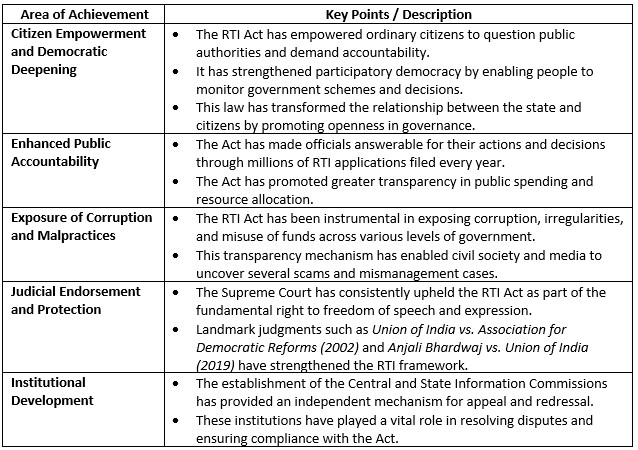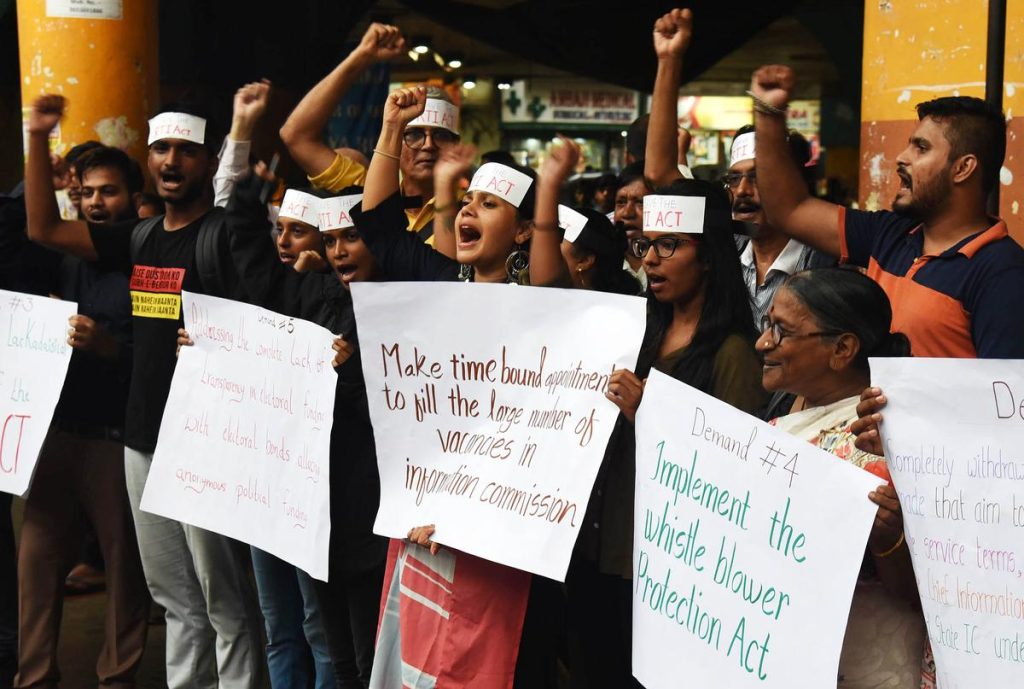SYLLABUS
GS-2: Important aspects of governance, transparency and accountability, e-governance- applications, models, successes, limitations, and potential; citizens charters, transparency & accountability and institutional and other measures.
Context:
As the Right to Information (RTI) Act, 2005 marks 20 years in 2025, it is important to assess its effectiveness and accomplishments.
About the Right to Information Act
• In the 1990s the Mazdoor Kisan Shakti Sangathan (MKSS) led by activists like Aruna Roy and Nikhil Dey launched an initiatives to establish foundations and put into practice the idea of the Right to Information.
• The Right to Information Act, enacted in 2005, aims to promote transparency and accountability in the functioning of public authorities.
• Section 3: every citizen has the right to access information held by or under the control of public authorities.
• It empowers citizens to hold the government accountable for its actions and decisions.
• The Act operationalises the citizens’ fundamental right to know, which is derived from Article 19(1)(a) of the Indian Constitution.
- Article 19(1)(a) of the Constitution of India guarantees the fundamental right to freedom of speech and expression for all citizens.
- Supreme Court in State of U.P. v. Raj Narain case held that the citizens have a right to know about the activities of public authorities, and this right is necessary for ensuring transparency and accountability in governance.
• The law mandates the appointment of Public Information Officers (PIOs) in every department to facilitate access to information.
• It establishes the Central and State Information Commissions as appellate authorities to resolve disputes and complaints.
• It also prescribes penalties for non-disclosure, misinformation, or delays without reasonable justification.
• The right to information under the Act is available only to citizens of India and not to corporations or foreign entities.
What is Information?
• The Act defines information under Section 2(f) as any material in any form that is held by a public authority.
• This includes records, documents, memos, e-mails, opinions, advices, press releases, circulars, orders, logbooks, contracts, reports, papers, samples, and models.
• It also covers information stored in electronic forms such as data, tapes, diskettes, or any other digital medium.
• The term includes information related to private bodies that can be accessed by public authorities under any prevailing law.
• The Act specifies that only existing information can be provided, and public authorities are not required to create or interpret information.
Key achievement of the Right to Information Act

Source:
DowntoEarth
Indian Express
The Hindu


